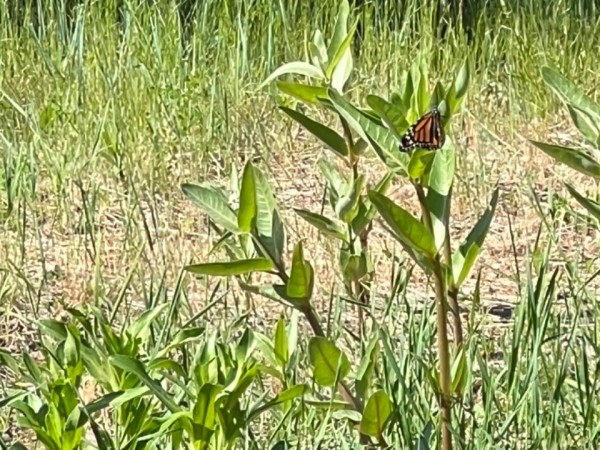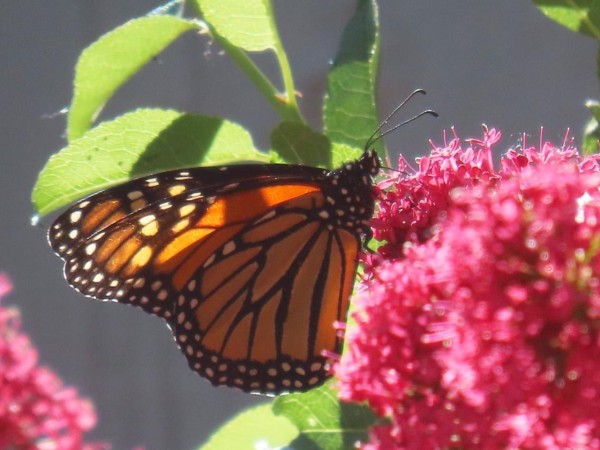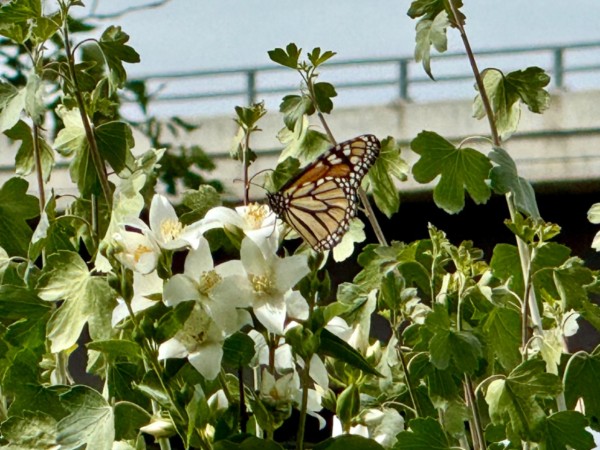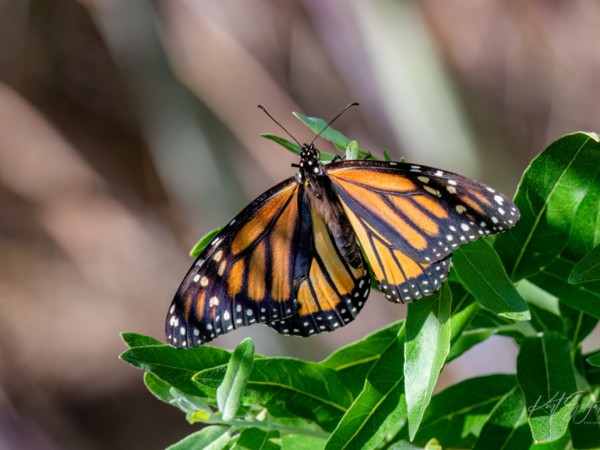Spring migration update #8: Western monarch population news from Gail Morris
As June begins Monarchs are expanding their range with first sightings reported in Oregon, Idaho and across Utah. Monarchs will now begin to lose their urge to migrate as we near the summer solstice. They’ll become more stationary with increased activity in breeding grounds. Summer heat will begin to simmer this week as a high pressure dome settles over the West. Record high temperatures are likely across much of the monarch breeding grounds.
From the Field
Dr. David James from Washington State University recently shared the results of his annual report of monarchs along the Trinity River in northern California over Memorial Day weekend.
“In 2023, after only 2 sightings in Oregon in May, there were at least 45 sightings of Monarchs in the PNW [Pacific Northwest] during the first two weeks of June. There ended up being more than 400 reported sightings of Monarchs during June-August. This year, there has been only one Monarch sighting so far in Oregon, but we expect the migration ‘rush’ to begin in the next few days. The Trinity River in northern California is a known migration route and a single monarch was seen on May 21 heading north along the river (Tasha Leonard). Inspection of more than 400 milkweed stems near the river on May 24 yielded 27 eggs, indicating that a trickle of Monarchs is now moving along the river. So, now is the time to keep your eyes peeled for migrating monarchs which may be moving fast but will stop for milkweed and nectar. Keep your eyes on your milkweed patch!”
Monarchs in Utah
Rachel Taylor was excited to see monarchs appear in her neighborhood in Utah for the first time this year.
“Its been a late season for first monarch sightings in Utah, with only two of our 29 counties reporting sightings to our group. On May 28, I was planting some native pollinators in my Matheson Park Monarch Waystation when I saw something catch my eye. A monarch had flown by and was circling a few showy milkweed plants. She circled the area and left. I watched as she circled through two more times, appearing to lay eggs. I spotted one egg, but couldn’t find others. I’ve since seen one in our neighborhood as well, but didn’t capture a photo.”
Anette in Highland, Utah also reported a monarch on June 4, writing, "Last year our first monarch spotted was June 9th in our backyard. This year we spotted one 5 days earlier than last year. Both years the first monarch of the year was in our backyard."
Other recent observations
Kate in Boise, Idaho submitted a photo of a monarch on June 2 and Kurt in Sparks, Nevada submitted a first sighting on June 4. Kate's was the first report from Idaho this year and Kurt's was the second from Nevada. We're always looking for more sightings from western states, so we'd love to hear from you if you've seen a monarch in your neck of the woods.
Send in your reports
We need your monarch sightings! Monarch numbers are increasing this time of year as they lay eggs expanding the population on their migration to the summer breeding grounds. If you are lucky enough to see a monarch, please report your sighting of any adult, eggs or larvae to Journey North. Your detailed description of what you see can include, but is not limited to, the monarch’s gender and activity. If known, include the type of flowers if they are nectaring or milkweed type if laying eggs. We also encourage you to report milkweed up! Photos encouraged and welcomed with all your reports.
Test your knowledge on our Facebook page
Last week, we posted a couple of fun tests for you on our Facebook page to see how well you know monarchs.
The first asked followers to tell the difference between an adult monarch and adult viceroy, one of its closest doppelgangers. Find that post here.
The other was a bit harder, asking you to find a monarch egg among nine similar eggs, but we still weren’t able to fool most of our followers. Whether you know your butterfly eggs or not, it’s fun to see the similarities and differences between butterfly species. Click here and give it a look!
Gail Morris is the Coordinator of the Southwest Monarch Study (www.swmonarchs.org and the Western Monarch Advocates. She is also a Monarch Watch Conservation Specialist, and the Vice President of the Central Arizona Butterfly Association. The Western Monarch Population News is based on comments provided to Gail Morris. We hope to increase the number of sightings and therefore photos and comments entered into Journey North. We rely on the volunteers who communicate regularly with Gail and who agree to participate in our effort to increase awareness of the population of western Monarchs. You can reach her at gail@swmonarchs.org




